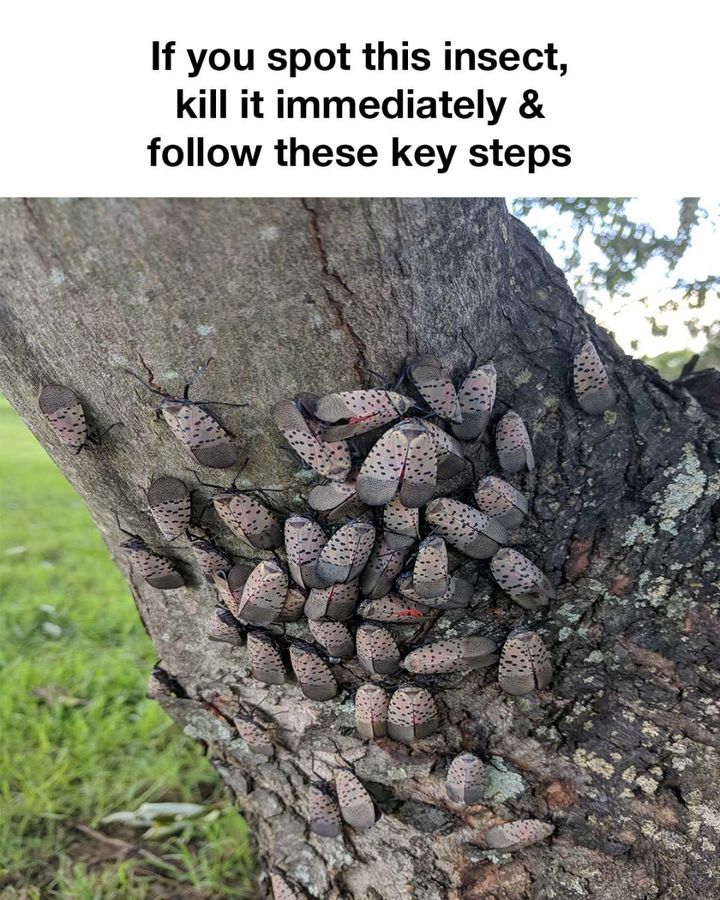Why Is It Important to Kill the Spotted Lanternfly?

Gotta check my backyard immediately!
The spotted lanternfly causes harm in several ways:
Economic Damage: This insect poses a severe threat to the viticulture (grape-growing) industry, among other agricultural sectors. The feeding activity of lanternflies stresses plants, making them vulnerable to disease and potentially reducing their crop yields significantly.
Environmental Impact: Beyond agriculture, lanternflies can damage or kill native trees, which can disrupt local ecosystems.
Nuisance in Residential Areas: As they feed, lanternflies excrete a sticky substance known as honeydew, which attracts bees and wasps and can lead to the growth of sooty mold. This mold can damage the plants it covers and also turns patios, decks, and cars sticky and black.
How to Safely Kill the Spotted Lanternfly
If you find a spotted lanternfly, it’s important to kill it to help control its population. Here’s how you can do it safely and effectively:
Manual Removal:
For nymphs and adults: Use your hand or a small object to crush the insects. Be sure to wear gloves as they can leave a residue that might irritate your skin.
For egg masses: Scrape them off the surfaces they are attached to (like tree trunks, stones, or any outdoor furniture), into a bag filled with hand sanitizer or rubbing alcohol. This method ensures that the eggs will not survive.
Sticky Bands:
Wrap tree trunks with sticky bands to trap nymphs and adults. This prevents them from climbing to the branches to feed and lay eggs. However, these bands can also inadvertently catch birds and other wildlife, so it’s crucial to cover them with a protective cage or mesh.
Use Insecticides:
Insecticidal soaps, neem oil, or more robust chemicals can be effective in controlling lanternfly populations. Always follow the label instructions and consider environmental impacts before spraying insecticides, especially near food crops or water sources.
Report Sightings:
If you’re in a state where the lanternfly is considered an invasive pest, report any sightings to your local Department of Agriculture or cooperative extension service. They can provide further instructions based on the infestation level and area.
